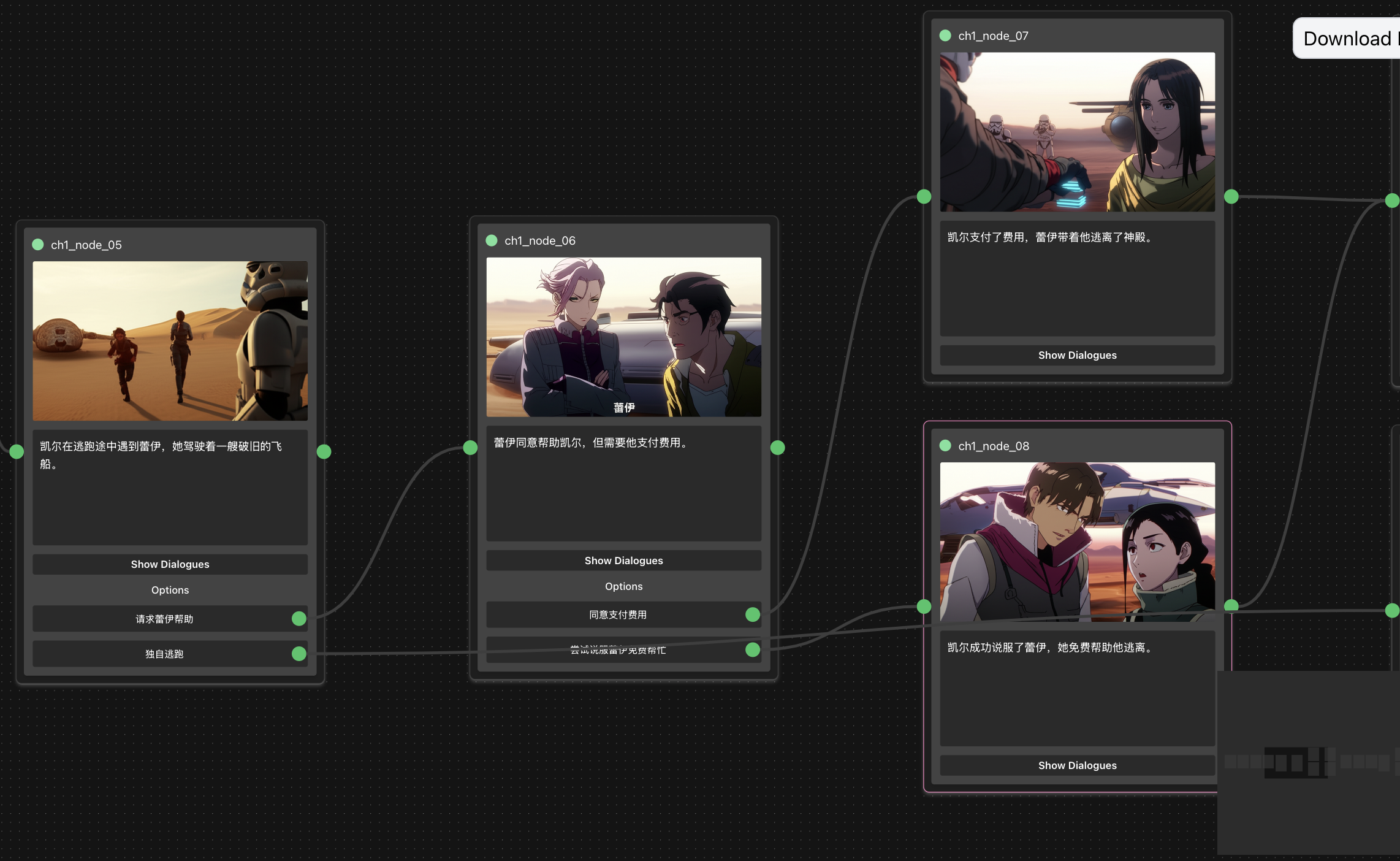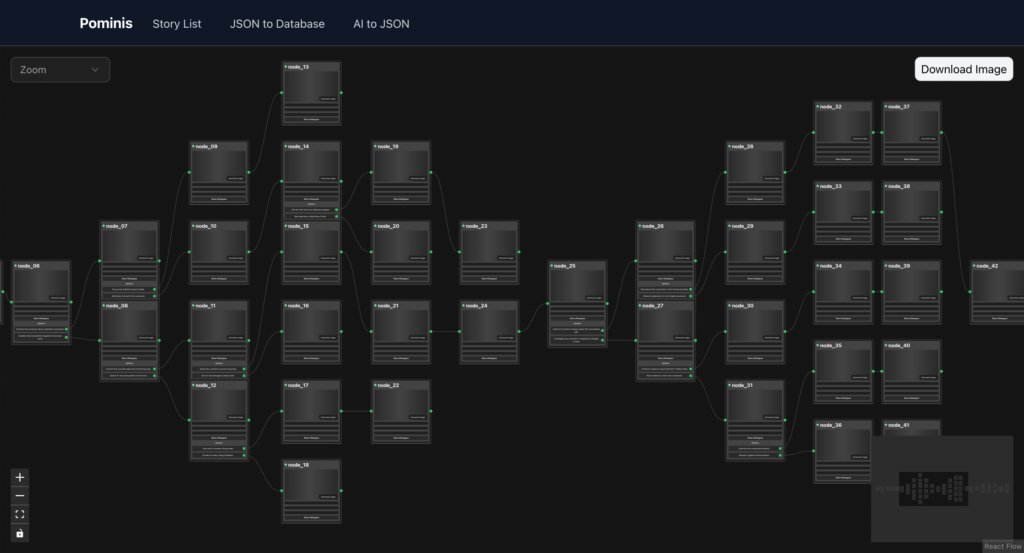How We Built a No-Code Platform for Interactive Storytelling
At Pominis, our mission is to democratize storytelling by enabling anyone to create, publish, and remix interactive visual novels—no coding required.
To bring this vision to life, we needed a tool that could translate the complexity of branching narratives into an intuitive, visual interface. Enter “React Flow”, a React-based library for building node-based editors.
Here’s why React Flow became the backbone of Pominis’ AI-driven story editor and how it shaped our platform’s development.
The back story: the moment
Back to Feb, during a team brainstorming session, a colleague shared a passion project he’d worked on: an AI-powered system that generated dynamic narrative stories. When he demoed it, our jaws dropped. There it was—a visual flow editor where nodes represented story beats, and connections mapped branching choices. It was the exact prototype we’d imagined for Pominis. This pivotal moment not only inspired us but also marked the birth of our React Flow Editor. We realized that React Flow’s flexibility and scalability could empower users to craft intricate stories visually, just as our teammate had envisioned. In essence, his project wasn’t just a proof-of-concept; it became the blueprint for Pominis’ future.
Why React Flow Was the Perfect Fit
Multiple Connections Between Nodes
Interactive stories thrive on branching paths. For instance, a romantic subplot might diverge based on dialogue choices, while a mystery could hinge on clues leading to multiple endings. To accommodate this complexity, React Flow’s support for multiple connections between nodes became indispensable. Writers can now link a single story event (like a character’s decision) to several outcomes effortlessly.

Drag-and-Drop Manipulation
Accessibility is core to Pominis. To ensure inclusivity, we prioritized a system where even first-time users could drag characters, plot points, or settings onto the canvas and stitch them together effortlessly. Thanks to React Flow’s drag-and-drop API, this vision became reality. Now, writers build scenes by dragging nodes for locations, characters, and dialogue, then connecting them in seconds.
Flexible Layouts for the most unpredictable branch
Stories evolve in unexpected ways. For example, a linear tale might spiral into a sprawling epic, or a side character could steal the spotlight. To adapt to this creativity, React Flow’s auto-layout algorithms and customizable positioning became critical. Creators can now expand their narratives without wrestling with cluttered canvases.

Our Mission: Building Tools for Everyday Storytellers
As the engineering team, we are driven by tools that solve real-world problems. At the heart of this effort lies Pominis’ goal: giving people the power to become heroes of their own stories. Whether it’s a teacher crafting a choose-your-own-adventure history lesson or a fan reimagining their favorite book’s ending, React Flow’s versatility helps us remove technical barriers. Ultimately, this isn’t just about games—it’s about unlocking creativity for everyone.
Conclusion
React Flow transformed Pominis from a lofty idea into a platform where imagination meets execution. By seamlessly integrating its robust features with AI enhancements, we’ve created a space where anyone can breathe life into their stories. As we look to the future, we’re excited to see what you will build.
Ready to bring your imagination to life?
Visit pominis.com and join the waitlist today!